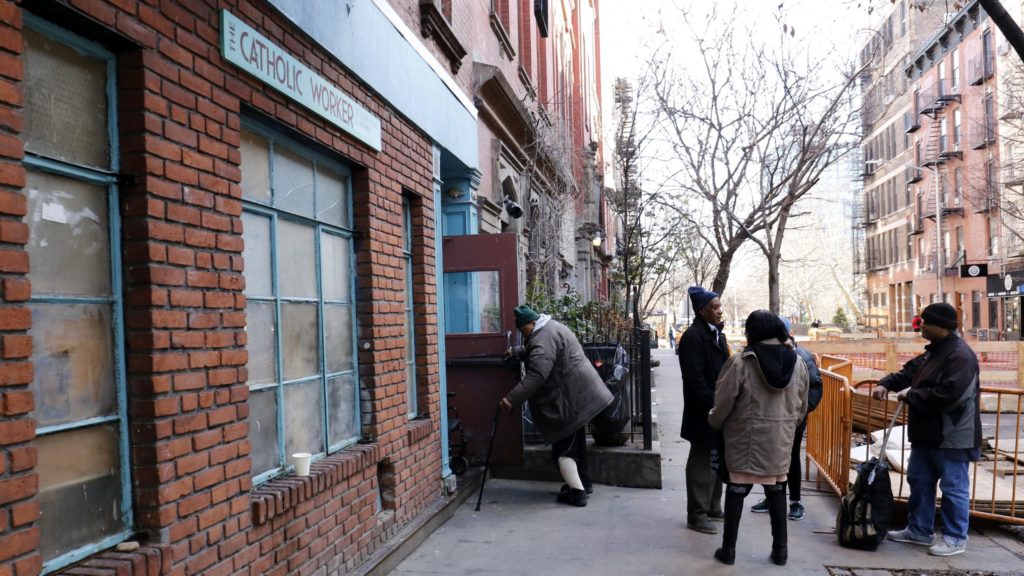This past week was one of the most liturgically rich of my priesthood. As part of the National Eucharistic Revival, the Marian pilgrimage was making its way through my diocese en route ultimately to Indianapolis. We processed with the Blessed Sacrament through the streets of Rochester, Minnesota, and then I celebrated a grand, festive Mass in the city’s Civic Center. A few days later, I said Mass in the town of La Crescent, which is just on the Minnesota side of the Mississippi River, and then processed with the Eucharist, in the company of around three thousand people, to La Crosse, on the Wisconsin side. At the close of that procession, I handed the monstrance to my colleague, Gerard Battersby, the bishop of La Crosse, and then together we celebrated Mass for the gathered throng in the La Crosse Civic Center. All of these prayer services and Eucharistic liturgies were marked by song, bells, incense wafting from swinging thuribles, sumptuous vestments, and litanies galore. The day following the La Crosse Mass, I had the privilege of ordaining three young men as priests for my diocese of Winona-Rochester. The ordination liturgy, one of the most beautiful in the Church’s repertoire, featured—along with everything just mentioned—the anointing of the hands of the newly ordained, a formal welcome from all of the priests present, and a ceremony of investiture.
All of it was wonderful. All of it, I’m sure, lifted up the hearts and souls of those who experienced it. But in the minds of some, this sort of grand liturgical display gives rise to a question, even a criticism: What does it have to do with the Church’s work of caring for the sick and the needy? What does any of it have to do with Jesus, who walked, simply garbed, the dusty roads of Galilee and reached out to the poor? Does the preoccupation with music, vestments, processions, litanies, etc. amount to a sort of fussy aestheticism, a fixation on liturgical foo-foo? Don’t we, in fact, often hear precisely this critique from older priests in regard to younger priests?
Permit me to say that, as far as it goes, this concern is valid, for the Church, as Joseph Ratzinger reminded us, does three things: it indeed worships God, but it also evangelizes and serves the poor. And the particular genius of the Church is manifested when it manages to keep these three tasks in balance, each one correcting the others and each one leading to the others. If I might, for the sake of this article, focus on the first and last of these essential responsibilities, the worship of God must lead to care for the poor, and care for the poor must lead to the worship of God—and this for a simple reason. Worship is all about centering ourselves upon God, assuring through gesture, word, song, procession, etc. that God is the central and ultimate concern of our lives. But the more we love God, the more we come to love those whom God loves; and the more we love those whom God loves, the more we love the One who made them lovable in the first place. This is why St. John tells us that the one who says he loves God but hates his neighbor is a liar and why the Lord himself insisted that there are two indispensable commandments: love of God and love of our brothers and sisters. I would like to express this as a principle: the higher you go liturgically, the lower you should go in service of the poor; and the lower you go in service of the poor, the higher you should go liturgically. The danger is a one-sided stress on liturgy or a one-sided stress on service, the first leading to fussiness and the second reducing the Church to a social service organization.
There are so many great figures in the recent history of the Church who embodied my principle in their lives and work. One might think of Dorothy Day, the foundress of the Catholic Worker Movement. There was no one in the twentieth-century Church more dedicated to serving the poor and the hungry and to fighting against social injustice than Dorothy Day—and yet her devotion to prayer, Benediction, the Rosary, frequent spiritual retreats, and of course the Blessed Sacrament was absolute. Mother Teresa of Kolkata was an icon of service during her long ministry among the poorest of the poor. No Catholic in the twentieth century had a more embodied commitment to and identification with the suffering than Mother Teresa—and yet her love for prayer was boundless, her attention to the Eucharist unsurpassed. And if we turn the principle around, we might draw attention to Virgil Michel, Reynold Hillenbrand, and Romano Guardini, all stalwarts of the Liturgical Movement that was so massively influential at Vatican II. Each of these gentlemen argued that what happens at the Mass in its splendor must spill out onto the streets as a devotion to the suffering members of the Mystical Body of Christ. As older Chicago priests told me when I was newly ordained, Msgr. Hillenbrand invited Dorothy Day to Mundelein Seminary to stress precisely this relationship.
One of the sad developments in the years following Vatican II is the falling apart of what was once a unity. Now “liberals” tend to be those who worry about the poor and “conservatives” those who are preoccupied with the liturgy. But this is stupid—and dangerous for the Church. The more you are one, the more you should be the other, and vice versa. So once again, I would like to state my adage: the higher you go liturgically, the lower you should go in service of the poor; and the lower you go in service of the poor, the higher you should go liturgically.
